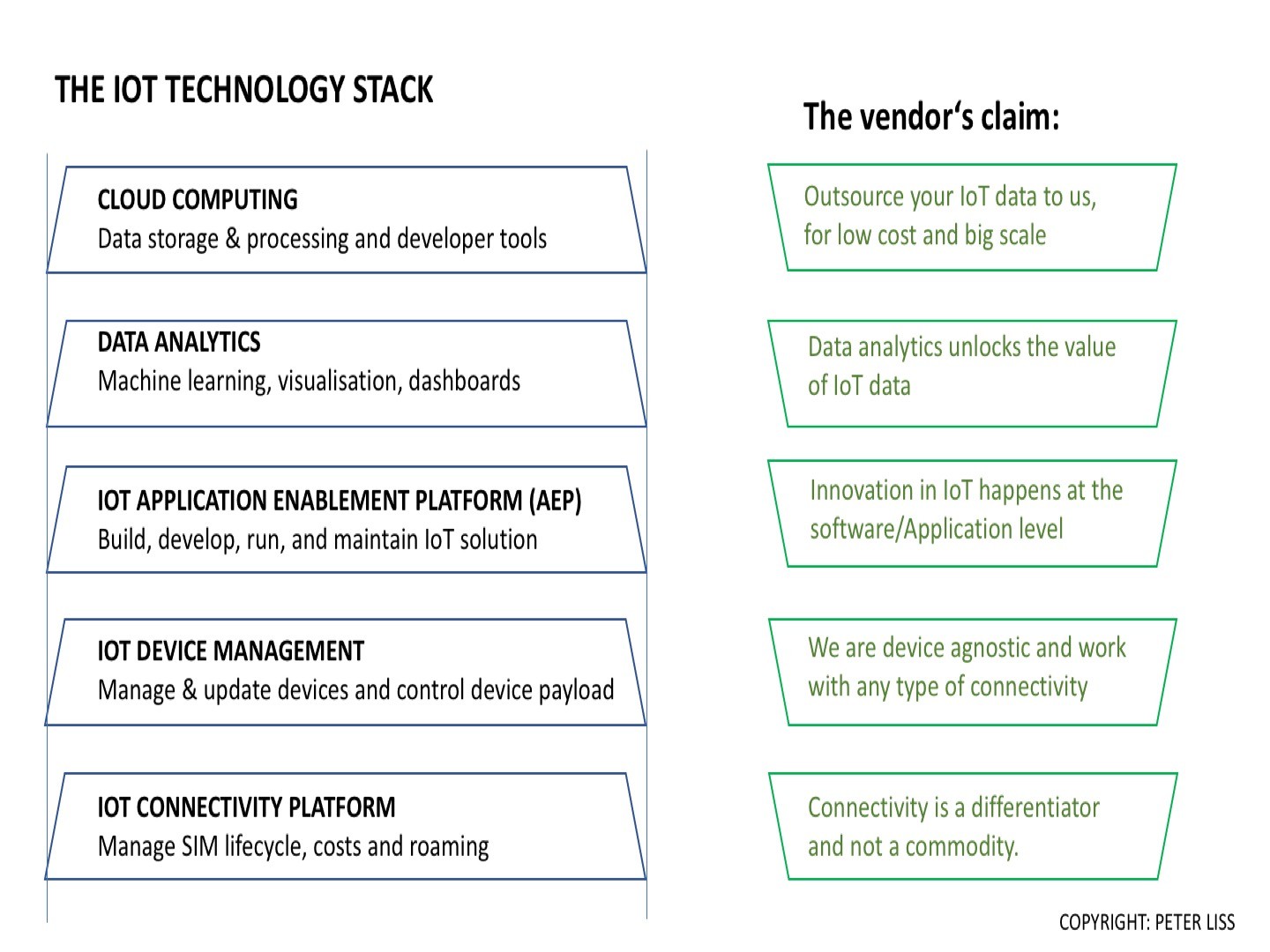› Forums › IoTStack › News (IoTStack) › New developments in IoT connectivity
Tagged: BizDev_G2, BizModel_G3, ConnectivityTech_S8, LPWAN S8, Standards G11
- This topic has 0 replies, 1 voice, and was last updated 5 years, 11 months ago by
Curator 1 for Blogs.
-
AuthorPosts
-
-
April 25, 2018 at 4:00 pm #22369
[Peter Liss ]
HOW TO DIFFERENTIATE WITH IOT CONNECTIVITY:
Let’s take a closer look:
1) There are many different types of Connectivity to choose from (cellular, WiFi, Zigbee, Satellite, and different types of LPWAN (Low Power Wide Area Networks). The criteria for selection include data cost, device cost, data rate/speed, battery life, outdoor and in-building coverage, and latency. Some of the much talked about networks like 5G are not yet available, and Narrowband IoT is in its infancy.
2) The variety of connectivity offerings are increasing. Even taking a single technology like 4G, the offerings in terms of coverage, cost, roaming, integration effort, and customer service do differ widely.
3) Costs are declining– the cost per MB has decreased, however, this is not the same as connectivity being a commodity (i.e. indistinct service). On the contrary, with more offerings and price competition, there is a greater need to choose the connectivity provider carefully. Pricing models may differentiate not only on cost per MB, but also with additional charges for VAS, the period charged for (monthly, per annum etc.) or number of connections included, or amount of data included in a packaged price. In the case of LPWA, charging can be per message, and not just per MB.
4) The IoT Connectivity platform is where some of the disruption is happening. This platform manages the cost of connection, quality of service, SIM and device status. Along with the type of connectivity chosen, hardware (gateways & sensors), and IoT Applications built, the connectivity platform will be a key differentiator to your business case or service launch.
My scheme below shows the place of the IoT Connectivity Management platform as the foundation of the IoT technology stack. Some differentiation could be achieved at any level in the Stack, but the effort required to offer a total solution will depend greatly on the Connectivity chosen at the bottom of the stack
WHAT ADVANTAGES DOES A PROGRAMMABLE SIM OFFER IN IOT?
Programmable SIM cards (also called eSIMS or eUICC ) are not new. What has changed is the number of service providers that offer them for IoT. Some prominent examples are Stream, EMnify, Cubic Telecom, KORE, Nokia WING and Teleena. Furthermore, the new generation of Smart SIM and associated management platforms are challenging the MNOs in terms of quality of service and signal coverage. They might also challenge MNOs in terms of cost – see the section below on SDN.
The “e” in eSIM can mean both electronic (it can switch network and be programmed over the air) and embedded (i.e. deep inside machinery, a car or a remote location). In other words, you do not need physical access to the embedded SIM to update it or to change network, service or security settings.
The advantages of an eSIM are that it can be programmed over the air to find the strongest signal, or according to customer network & service preferences. When a data-service failure is detected, the eSIM can switch dynamically to the best network service. Consider a user case such as Smart Metering. The meter is always connected by being programmed not only to select the strongest signal, but also to select the signal that is best for your Meter technology and customer requirements.
In sum, the IoT Service Provider does not own a network, but can still offer the following to its customers:
•Issue own SIM cards, that can be embedded and switch operator over the air.
•Attach to the best or cheapest radio signal (RAN) – automatically
•Billing capabilities, often in real time, for the pricing of new IoT services.
WHAT IS THE IMPACT OF SDN ON IOT?
As explained above, the e-SIM is the first disruptive step to being able to offer an IoT service, without being tied to one specific radio network (RAN). The second step is to bypass the Operator’s core network. This is now possible with some Service Providers using Software Defined Networks (SDN) and NFV (Network Feature Virtualisation). They have built their own virtualised core network that is cloud hosted. EMnify is one example that can offer the following advantages:
•Low cost, because designed for IoT, and using proprietary technology (therefore no licencing costs)
•Auto-configuration and scaling. Because it is Cloud Based the service is truly elastic (i.e. can be quickly and simply expanded to meet customer demand for increased data volume, or larger number of SIM cards)
•Pay-as-you-grow pricing
•Flexible and Real time billing that is accessible online
•Have own numbering resources (IMSI, IPv6, MSISDN)
•Manage your own virtual mobile IoT network including Elastic Packet Core, Subscriber Management, OSS/BSS, Management Portals and open APIs.
•A private and secure device cloud and implement own security policies (such as own VPN – virtual private network – in the core network in the cloud).
The “Gorilla” MNO (e.g. Telekom, Verizon, Vodafone etc) is reduced to providing only the radio network, and with the eSIM you can actually switch networks. To be clear, you are not reliant on the operator for the core network at all, and you have a choice of radio network. In sum, the advantage is that such a virtual network in the Cloud allows IoT user cases that have lower revenues, because the IoT platform is designed for lower connectivity costs.
-
-
AuthorPosts
- You must be logged in to reply to this topic.

